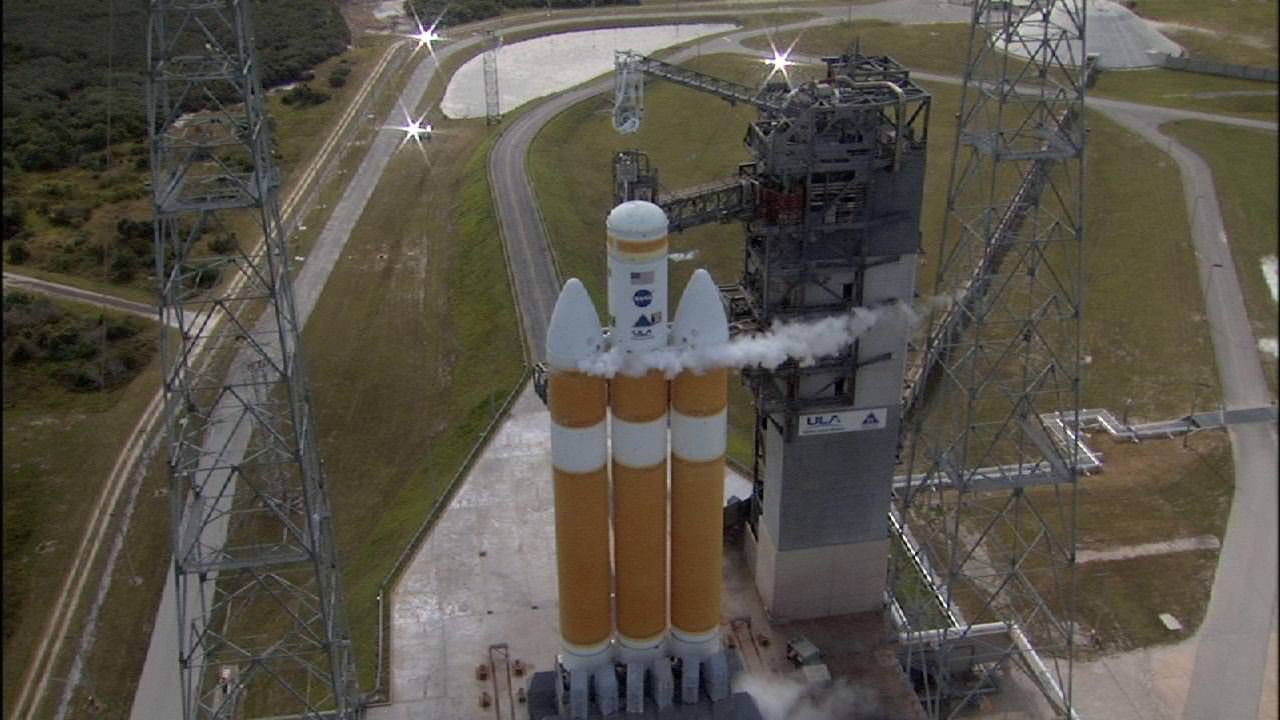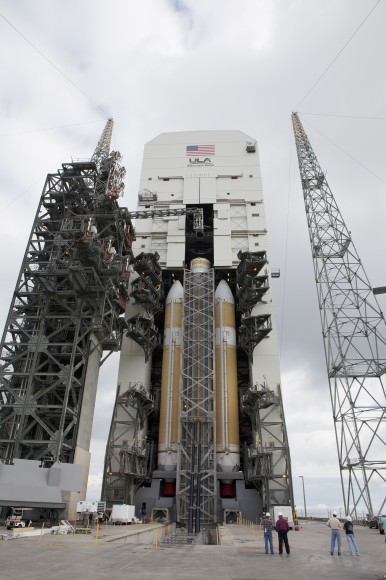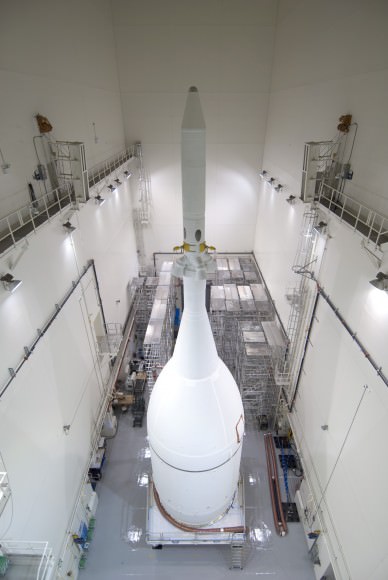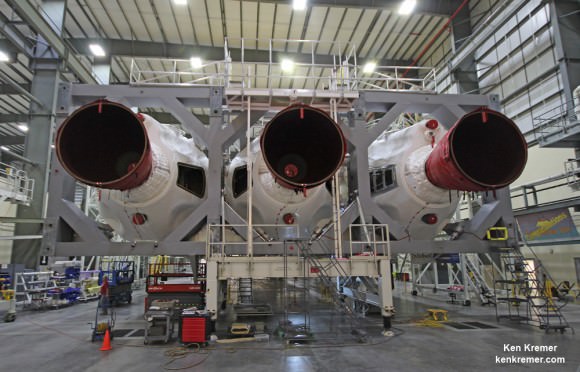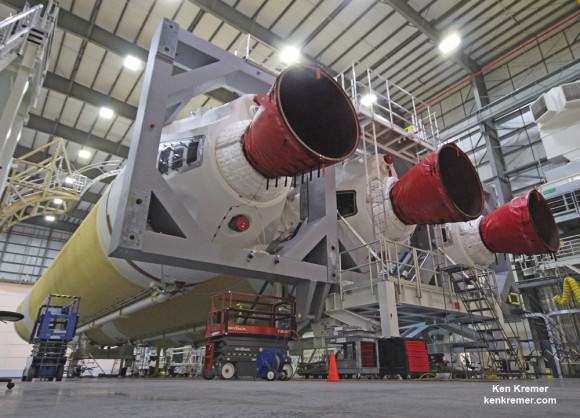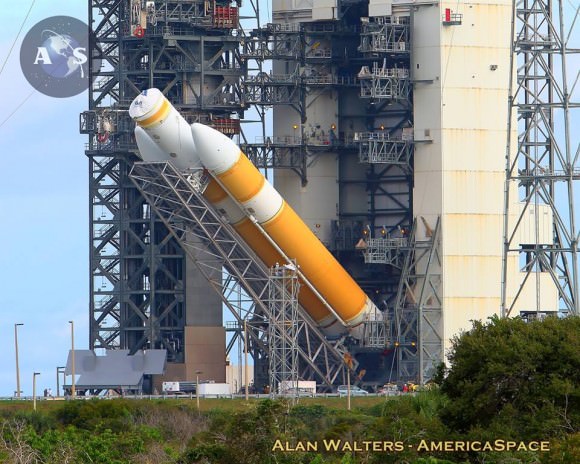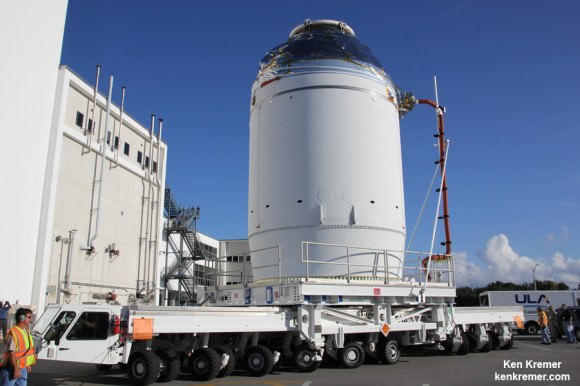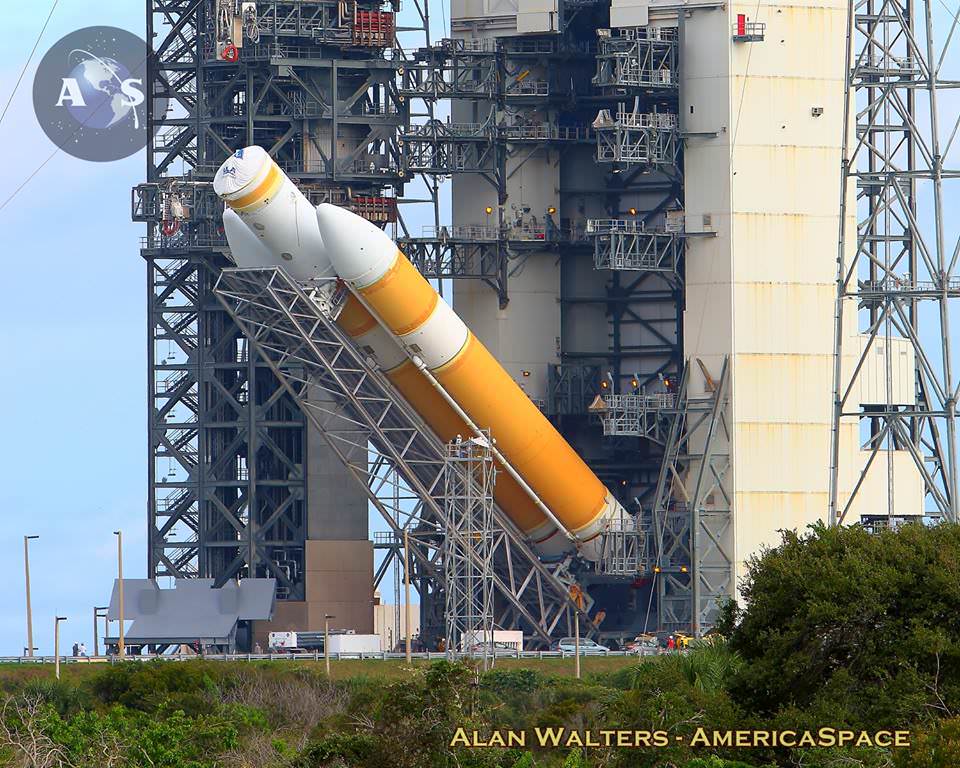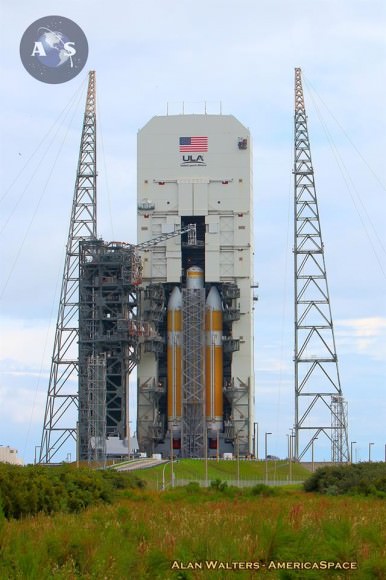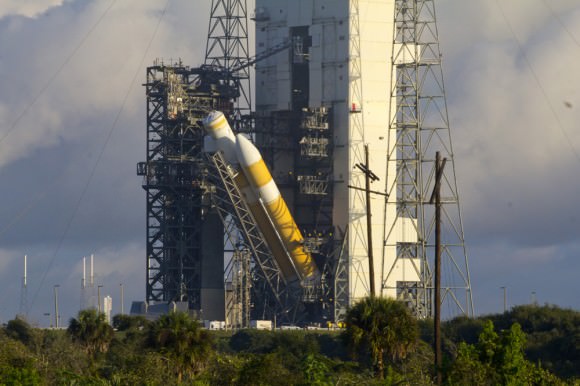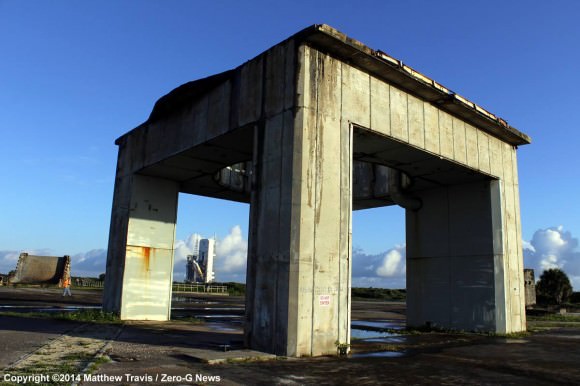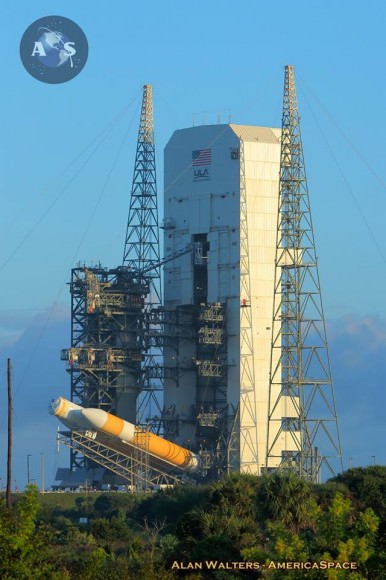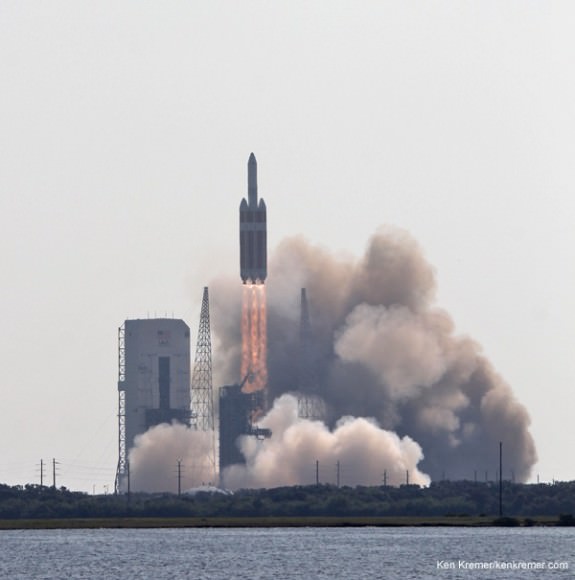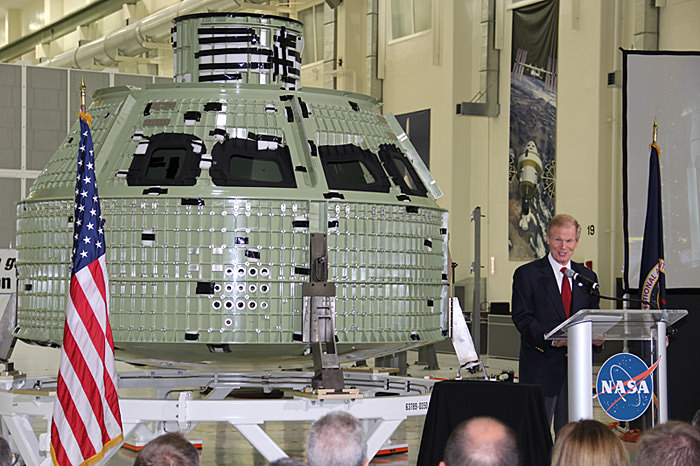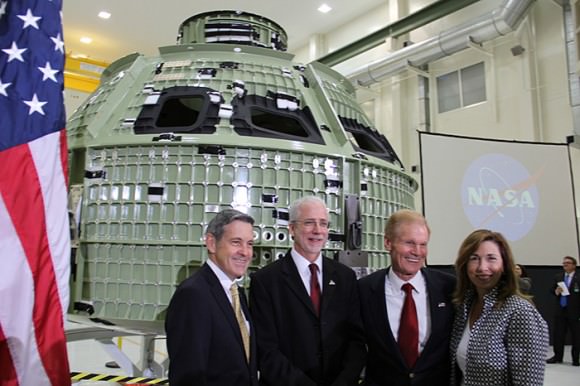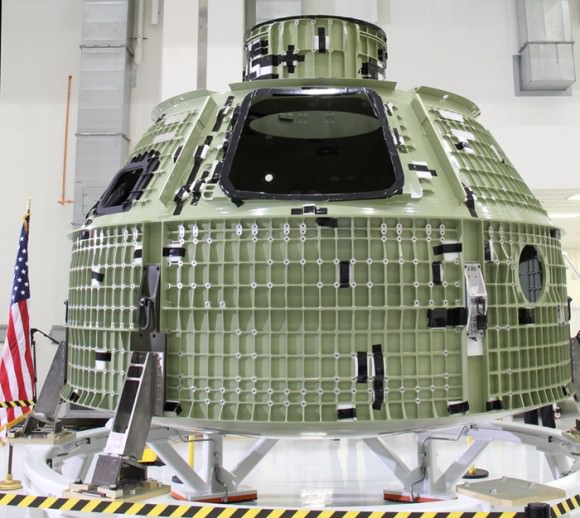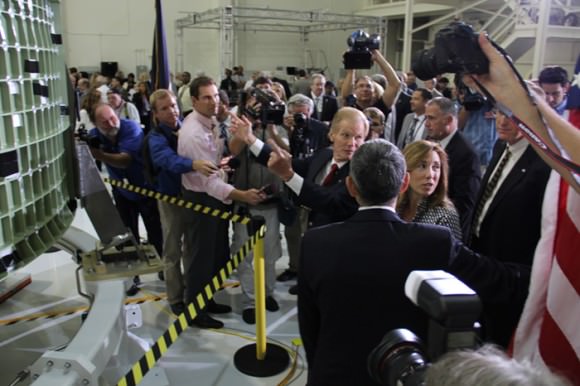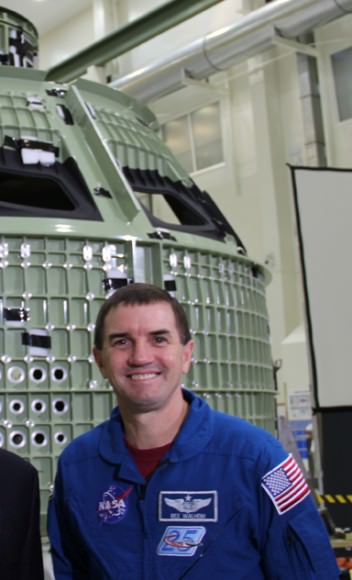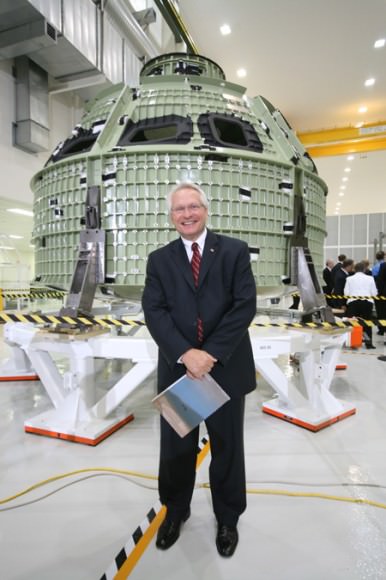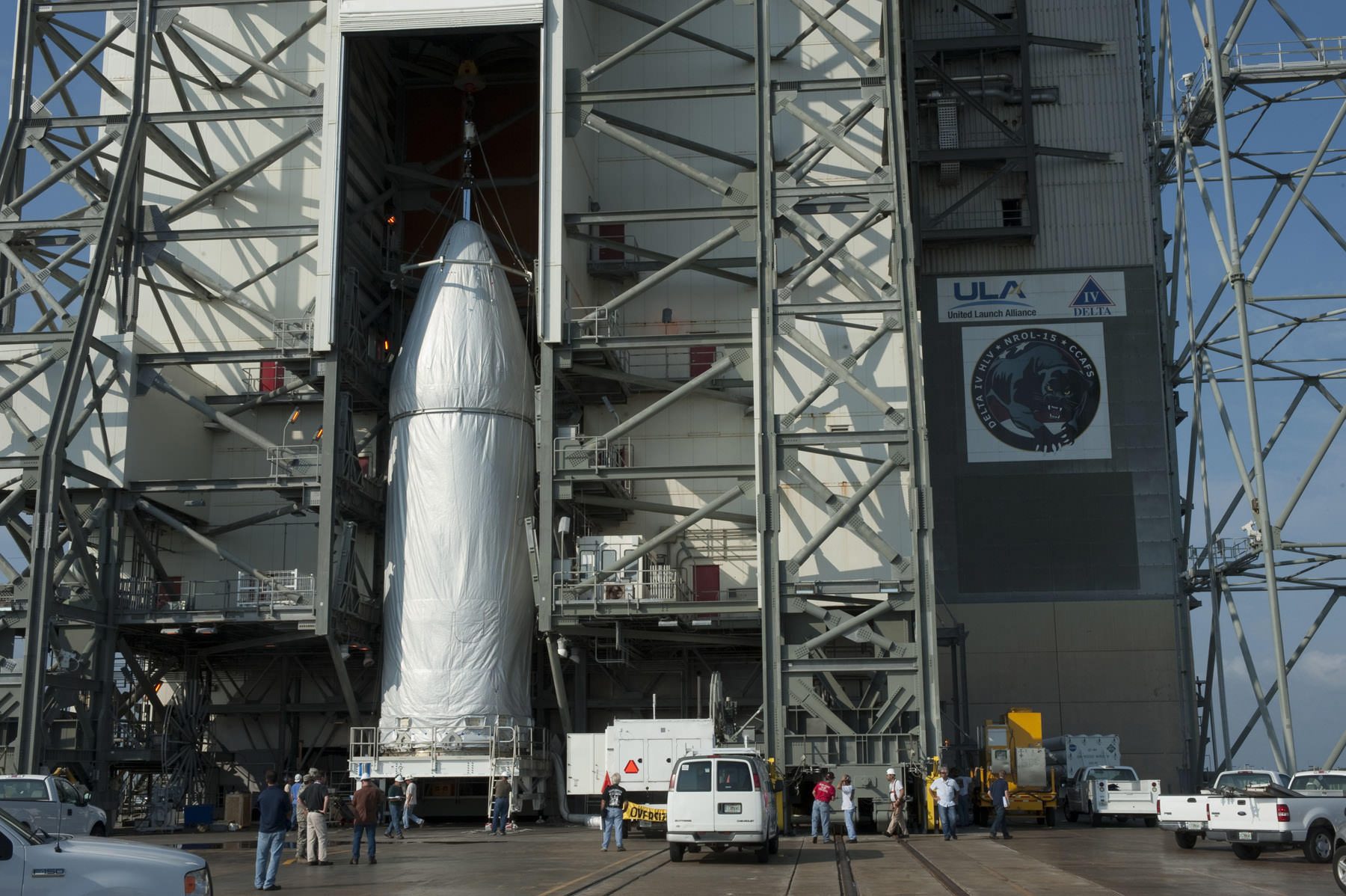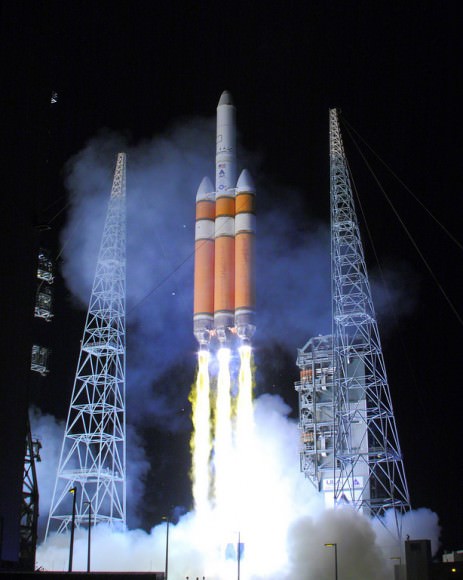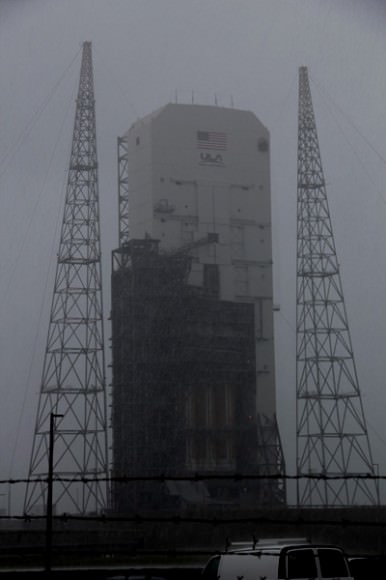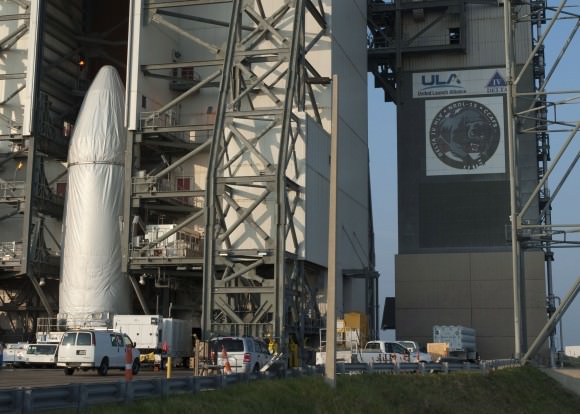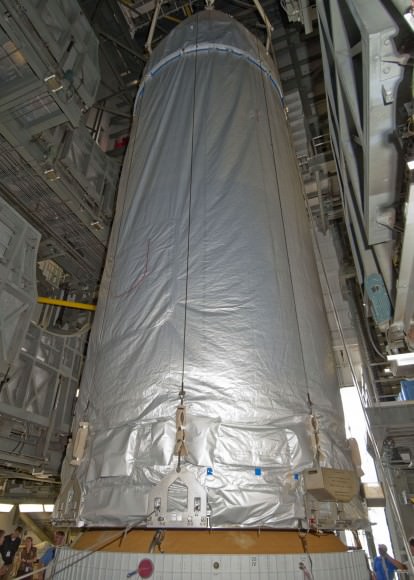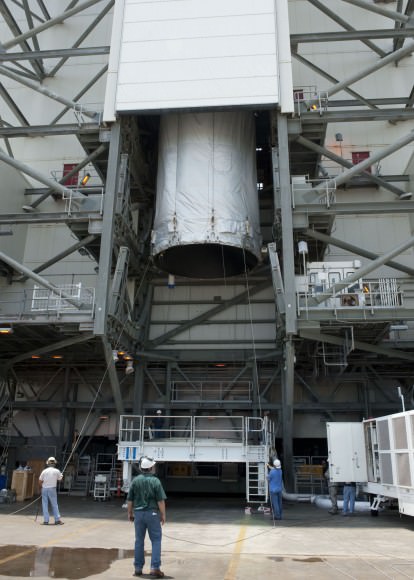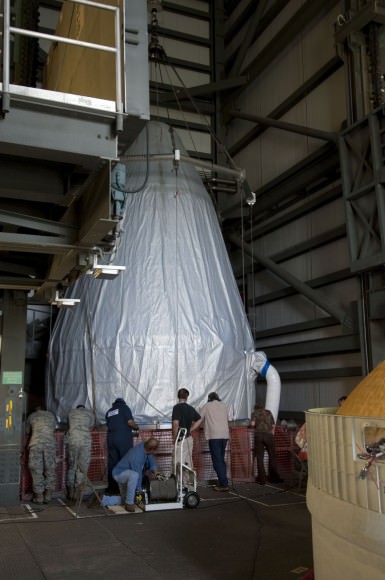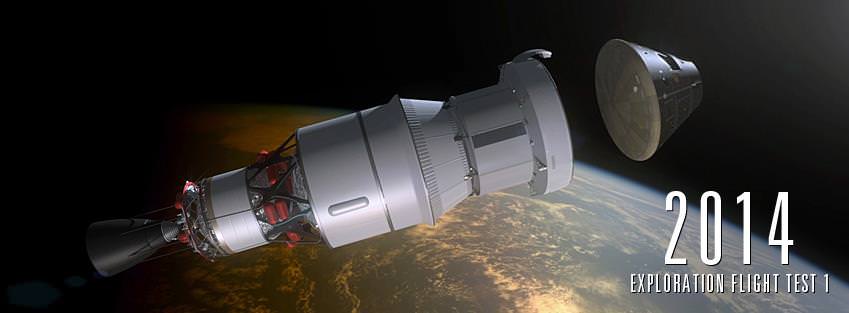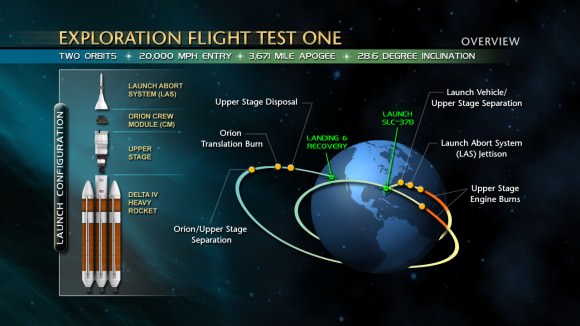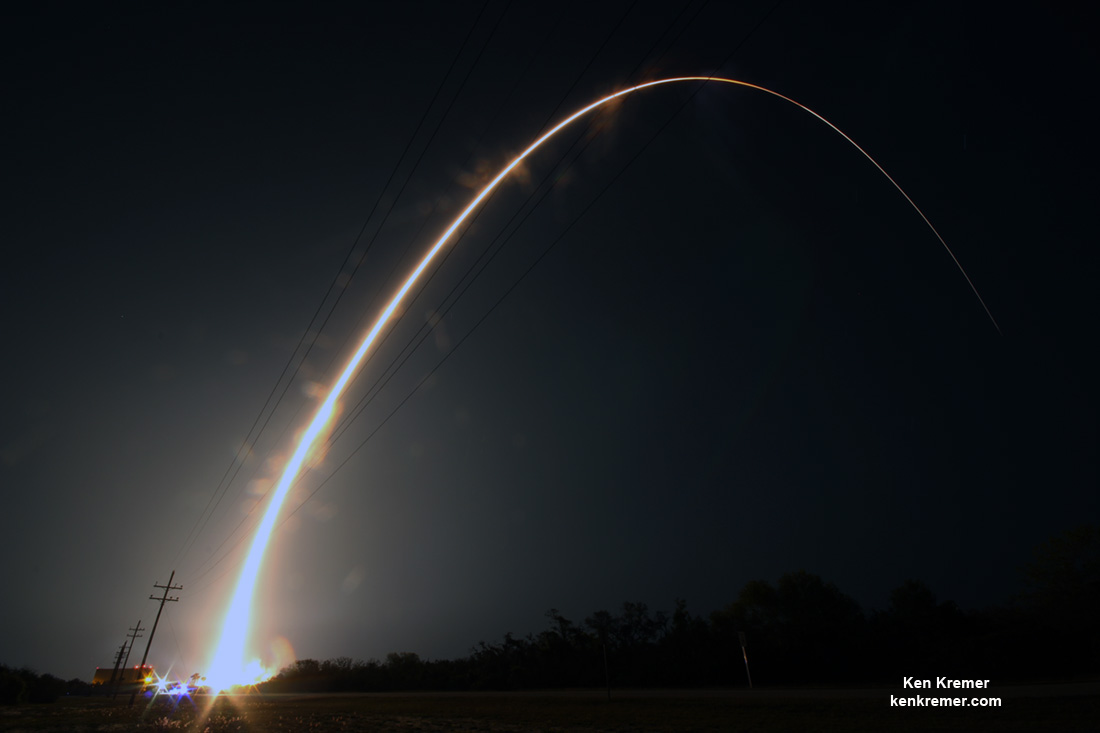
CAPE CANAVERAL AIR FORCE STATION, FL – On the 70th anniversary year commemorating the United States Air Force, a ULA Delta IV rocket put on a daunting display of nighttime rocket fire power shortly after sunset Saturday, March 19 – powering a high speed military communications satellite to orbit that will significantly enhance the targeting firepower of forces in the field; and was funded in collaboration with America’s strategic allies.
The next generation Wideband Global SATCOM-9 (WGS-9) military comsat mission for the U.S. Force lifted off atop a United Launch Alliance (ULA) Delta IV from Space Launch Complex-37 (SLC-37) on Saturday, March 18 at 8:18 p.m. EDT at Cape Canaveral Air Force Station, Florida.
The launch and separation of the payload form the Delta upper stage was “fully successful,” said Major General David D. Thompson, Vice Commander Air Force Space Command, Peterson Air Force Base, CO, to our media gaggle soon after launch at the press view site on base.
“The WGS-9 mission is key event celebrating the 70th anniversary of the U.S. Air Force as a separate service. The USAF was created two years after World War II ended.”
“The theme of this year is ‘breaking Barriers.’”
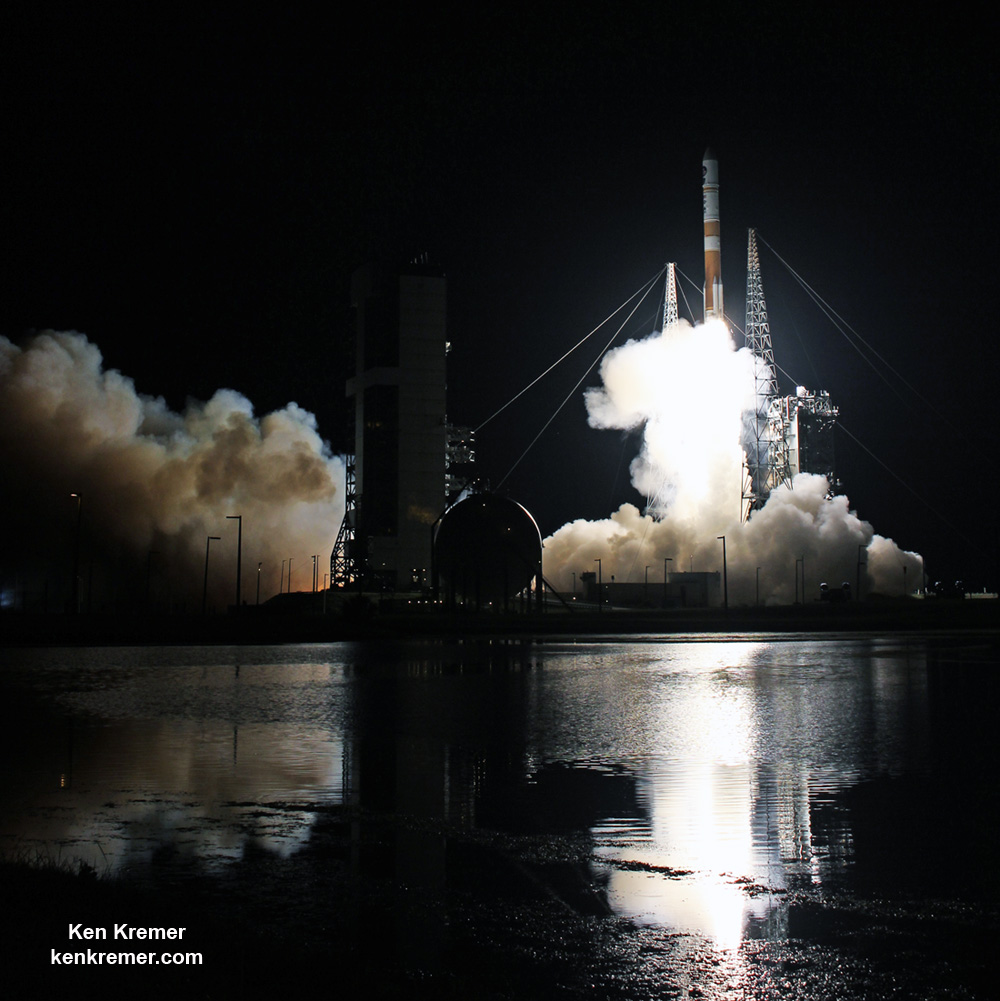
WGS-9 was delivered to a supersynchronous transfer orbit atop the ULA Delta IV Medium+ rocket.
The WGS-9 satellite was paid for by a six nation consortium that includes Canada, Denmark, Luxembourg, the Netherlands amd the United States. It joins 8 earlier WGS satellite already in orbit.
“WGS-9 was made possible by funding from our international partners,” Thompson emphasized.
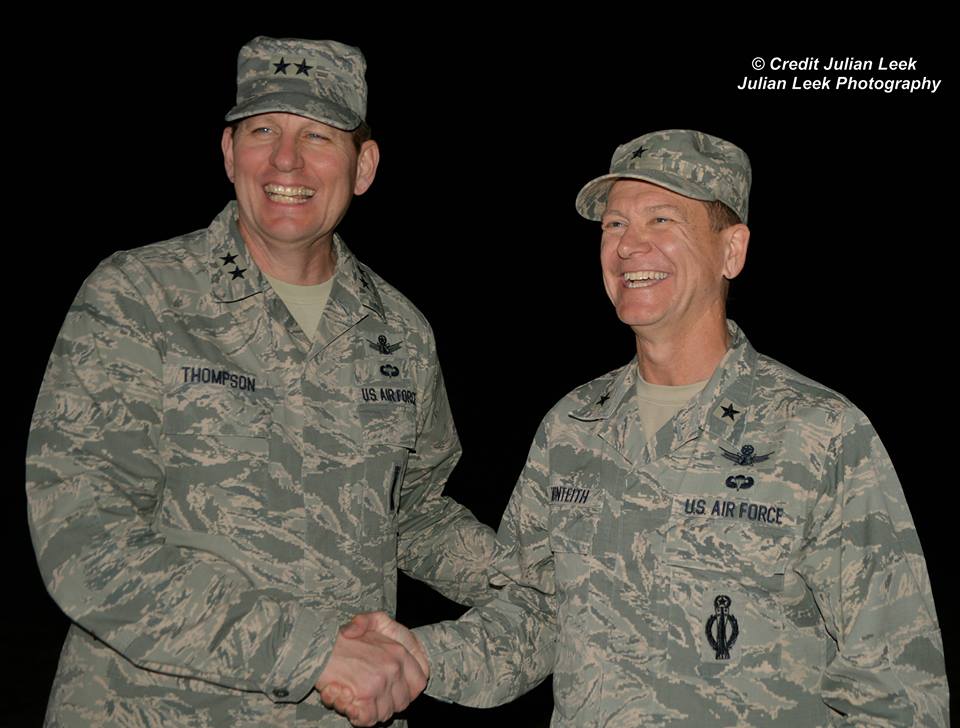
It is the ninth satellite in the WGS constellation that serves as the backbone of the U.S. military’s global satellite communications.
“WGS provides flexible, high-capacity communications for the Nation’s warfighters through procurement and operation of the satellite constellation and the associated control systems,” according to the U.S. Air Force.
“WGS provides worldwide flexible, high data rate and long haul communications for marines, soldiers, sailors, airmen, the White House Communication Agency, the US State Department, international partners, and other special users.”

WGS-9 also counts as the second of at least a trio of launches from the Cape this March – with the possibility for a grand slam fourth at month’s end – if all goes well with another SpaceX Falcon 9 launch from pad 39A.
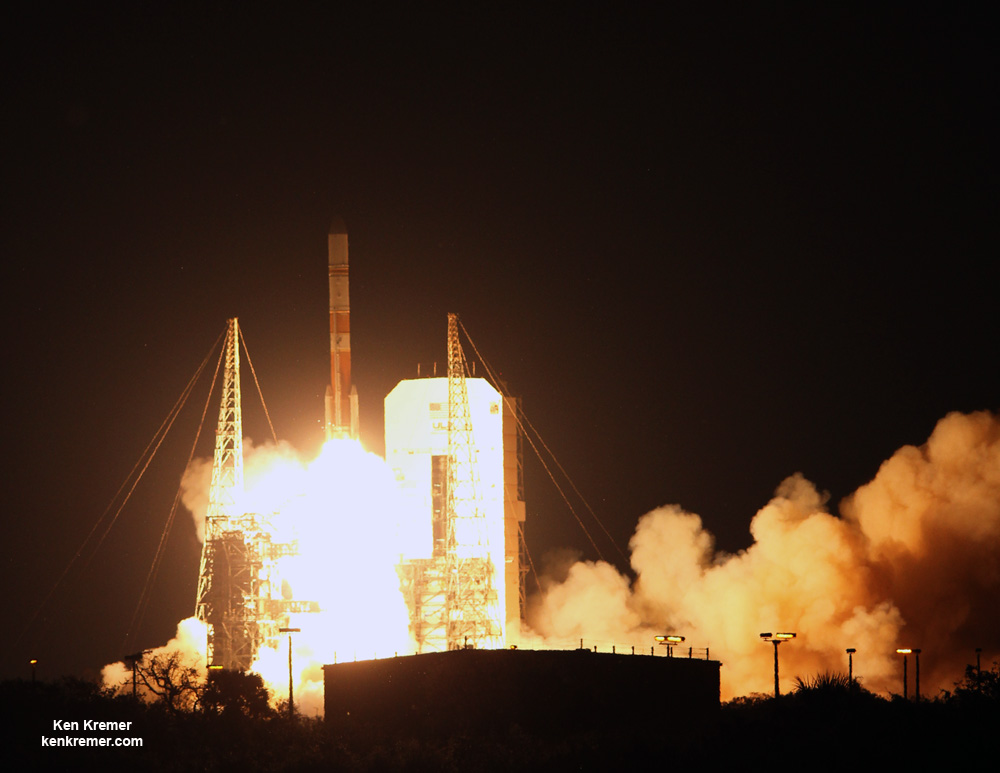
The 217 foot tall Delta IV Medium+ rocket launched in the 5,4 configuration with a 5 meter diameter payload fairing that stands 47 feet tall, and 4 solid rocket boosters to augment the first stage thrust of the single common core booster.
The payload fairing was emblazoned with decals commemorating the 70th anniversary of the USAF, as well as Air Force, mission and ULA logos.
Orbital ATK manufactures the four solid rocket motors. The Delta IV common booster core was powered by an RS-68A liquid hydrogen/liquid oxygen engine producing 705,250 pounds of thrust at sea level.
A single RL10B-2 liquid hydrogen/liquid oxygen engine powered the second stage, known as the Delta Cryogenic Second Stage (DCSS).
The booster and upper stage engines are both built by Aerojet Rocketdyne. ULA constructed the Delta IV Medium+ (5,4) launch vehicle in Decatur, Alabama.
The DCSS will also serve as the upper stage for the maiden launch of NASA heavy lift SLS booster on the SLS-1 launch slated for late 2018. That DCSS/SLS-1 upper stage just arrived at the Cape last week – as I witnessed and reported here.
Saturday’s launch marks ULA’s 3rd launch in 2017 and the 118th successful launch since the company was formed in December 2006 as a joint venture between Boeing and Lockheed Martin.
The is the seventh flight in the Medium+ (5,4) configuration; all of which were for prior WGS missions.

Stay tuned here for Ken’s continuing Earth and planetary science and human spaceflight news.
………….
Learn more about USAF/ULA WGS satellite, SpaceX EchoStar 23 and CRS-10 launch to ISS, ULA SBIRS GEO 3 launch, EchoStar launch GOES-R launch, Heroes and Legends at KSCVC, OSIRIS-REx, InSight Mars lander, ULA, SpaceX and Orbital ATK missions, Juno at Jupiter, SpaceX AMOS-6, ISS, ULA Atlas and Delta rockets, Orbital ATK Cygnus, Boeing, Space Taxis, Mars rovers, Orion, SLS, Antares, NASA missions and more at Ken’s upcoming outreach events at Kennedy Space Center Quality Inn, Titusville, FL:
Mar 21-25: “USAF/ULA WGS satellite launch, SpaceX EchoStar 23, CRS-10 launch to ISS, ULA Atlas SBIRS GEO 3 launch, EchoStar 19 comsat launch, GOES-R weather satellite launch, OSIRIS-Rex, SpaceX and Orbital ATK missions to the ISS, Juno at Jupiter, ULA Delta 4 Heavy spy satellite, SLS, Orion, Commercial crew, Curiosity explores Mars, Pluto and more,” Kennedy Space Center Quality Inn, Titusville, FL, evenings


